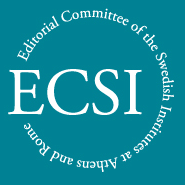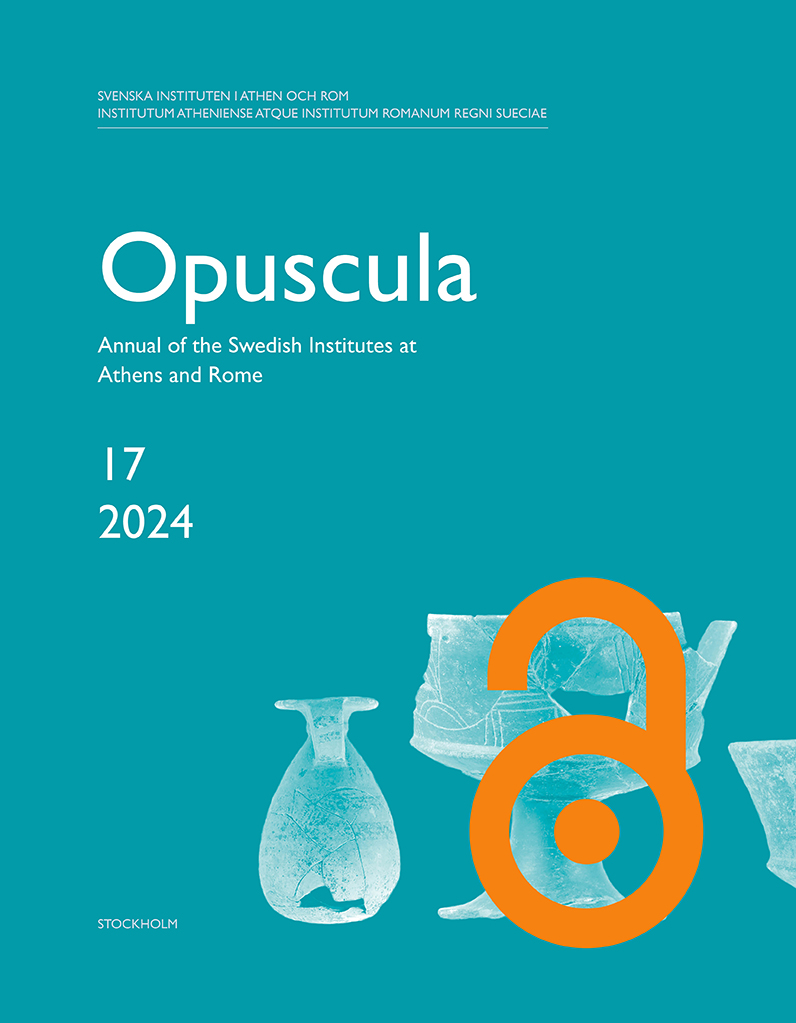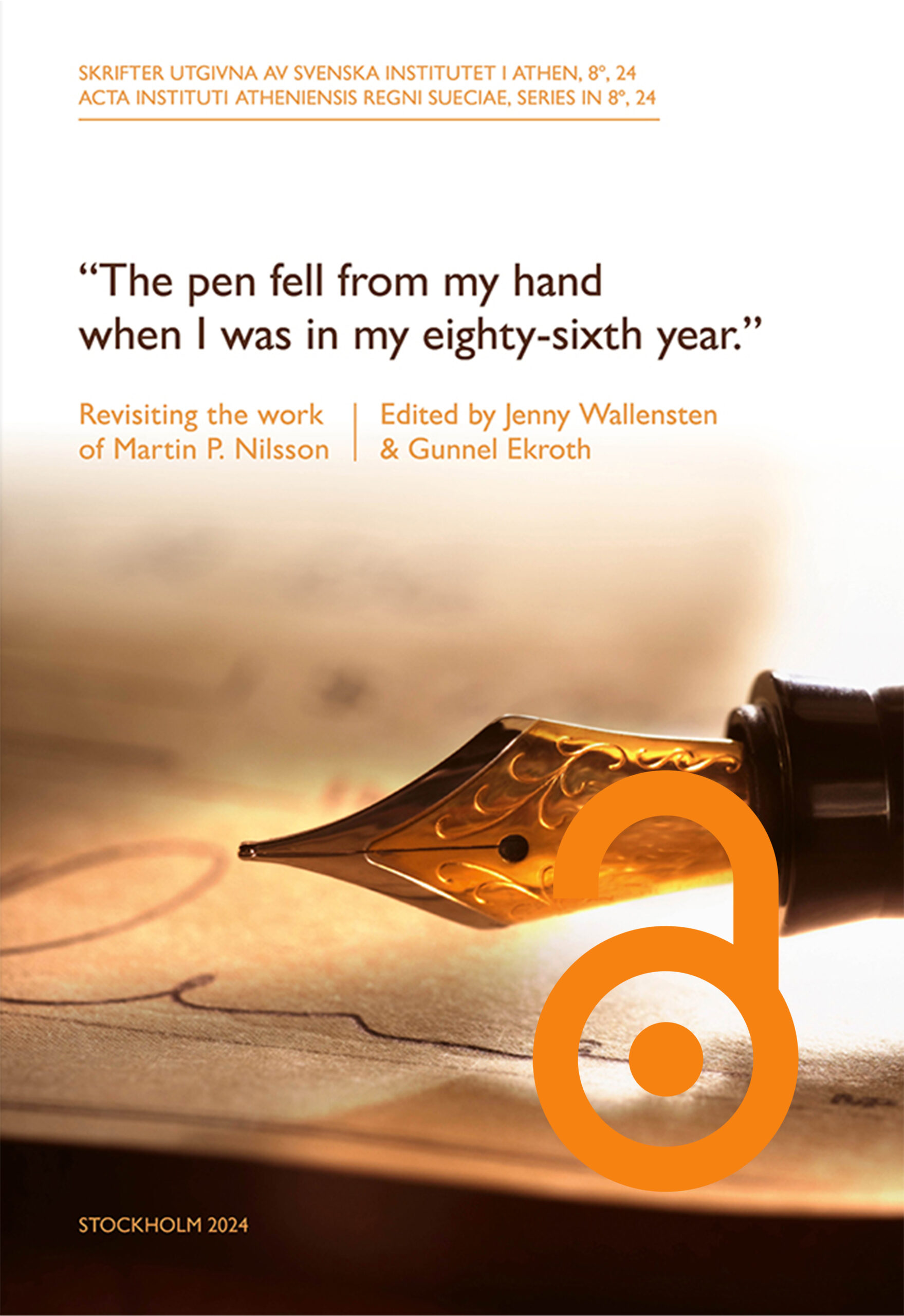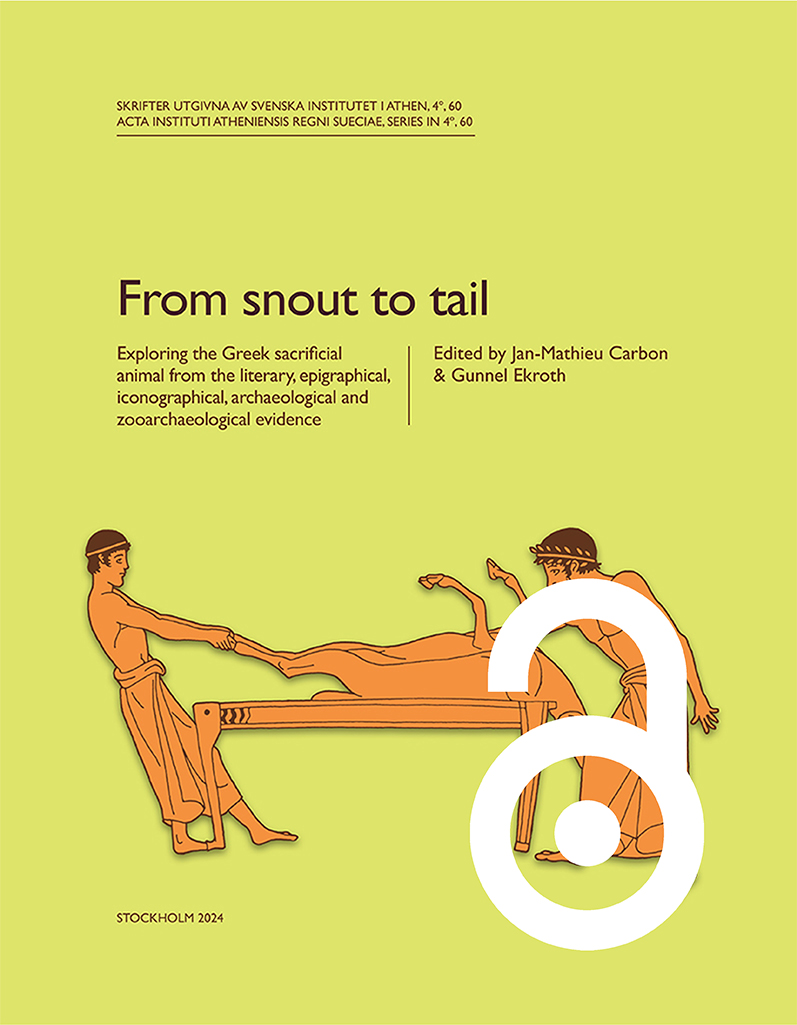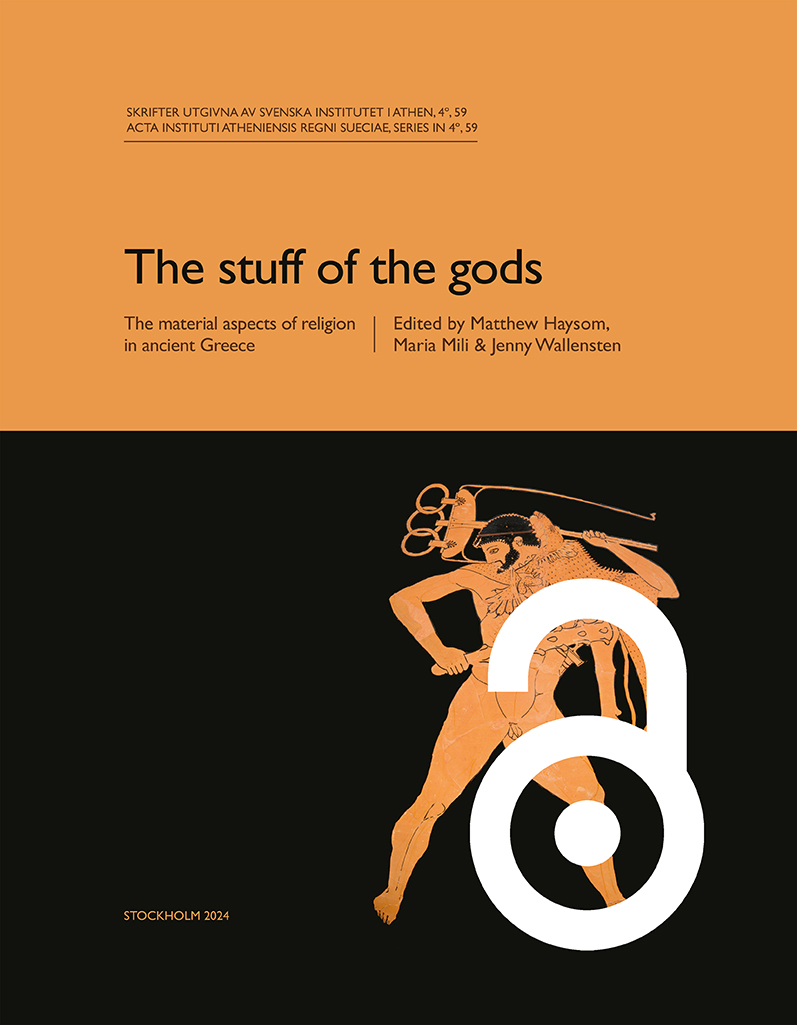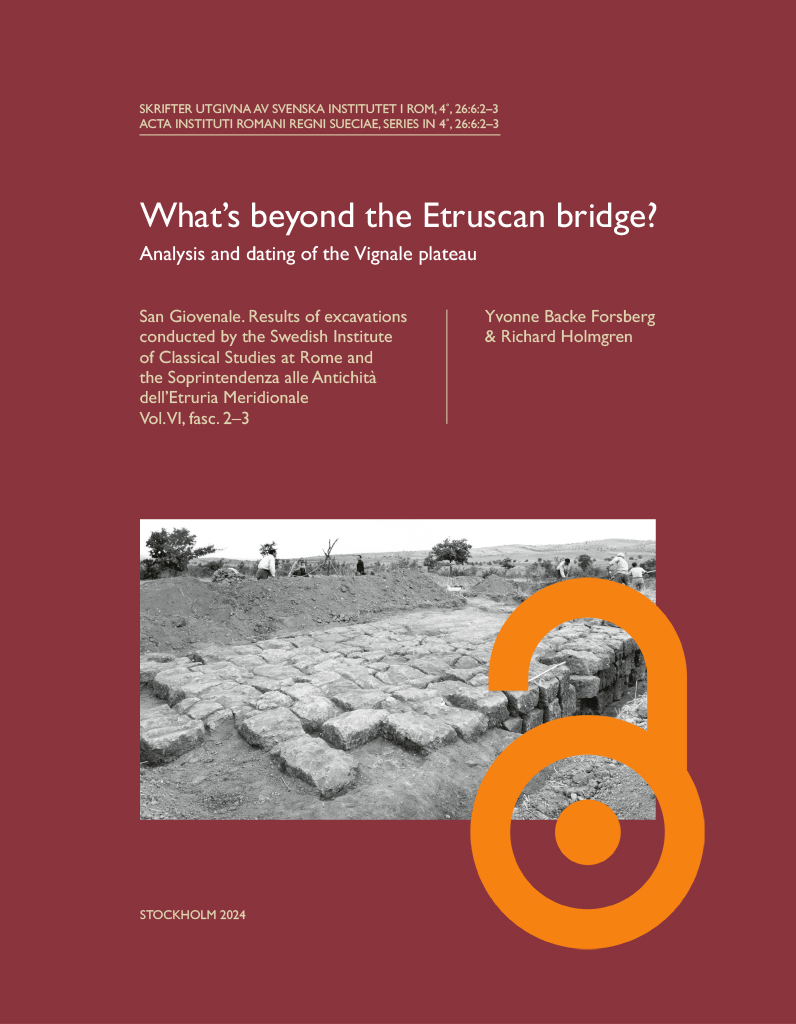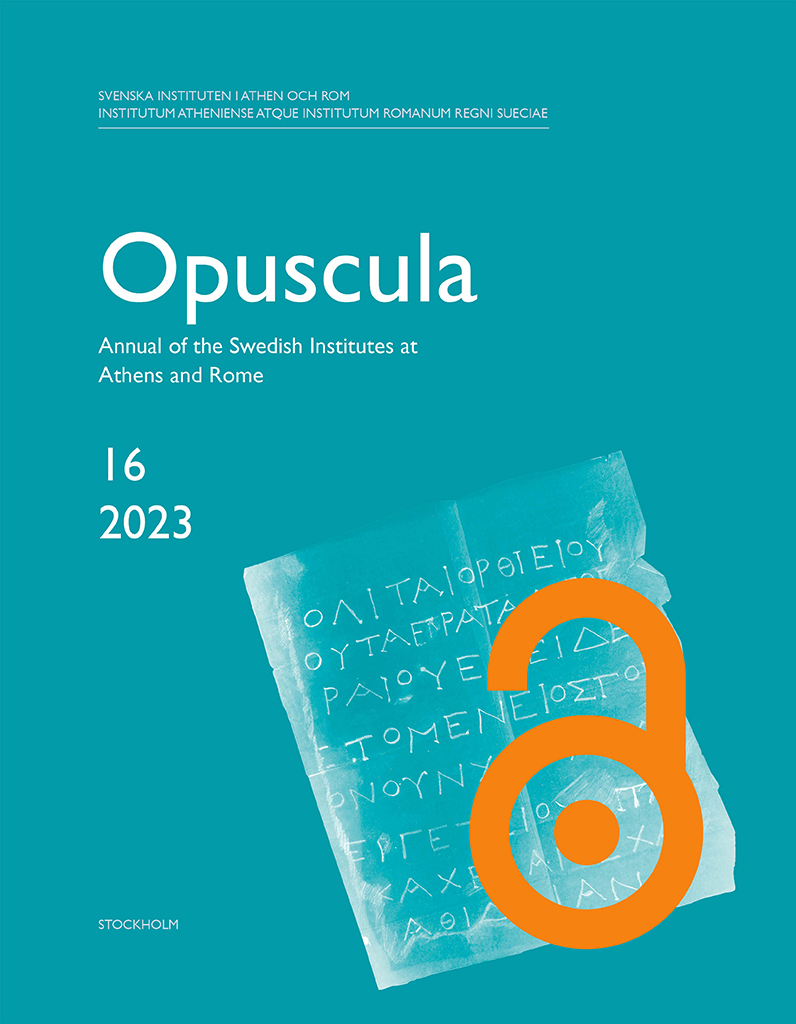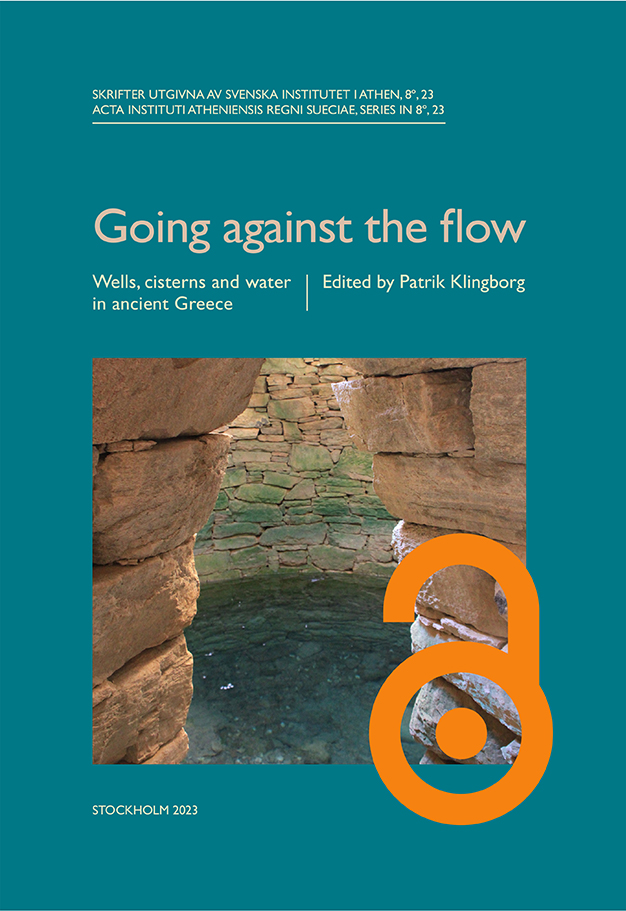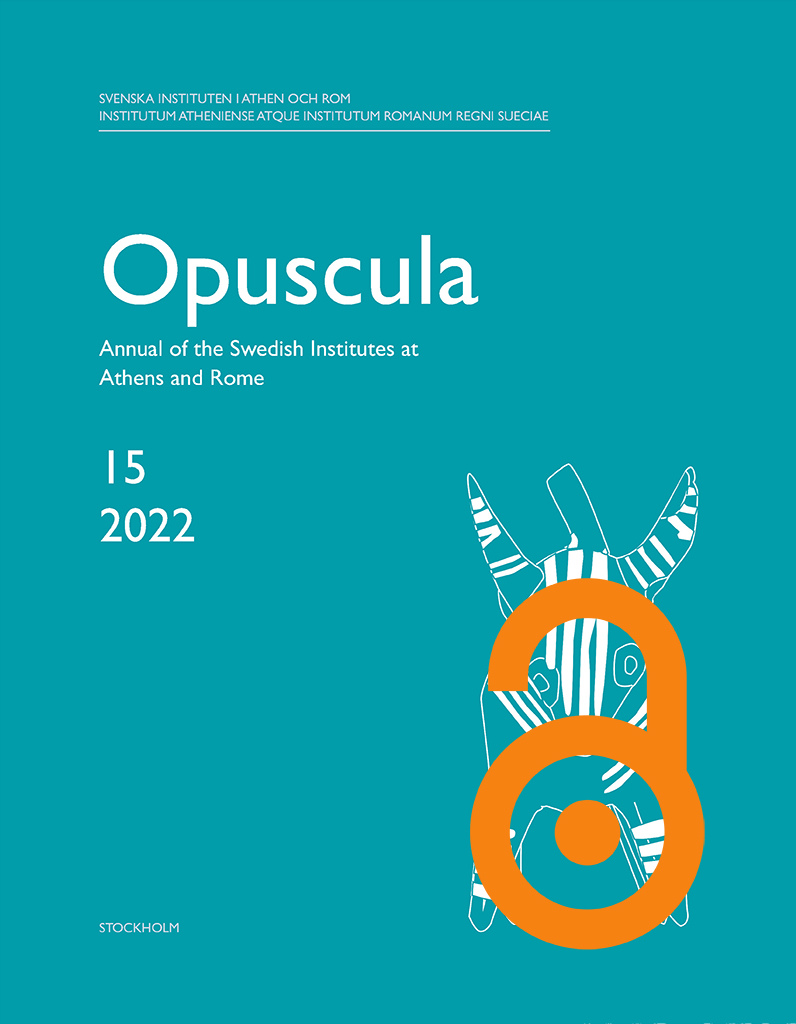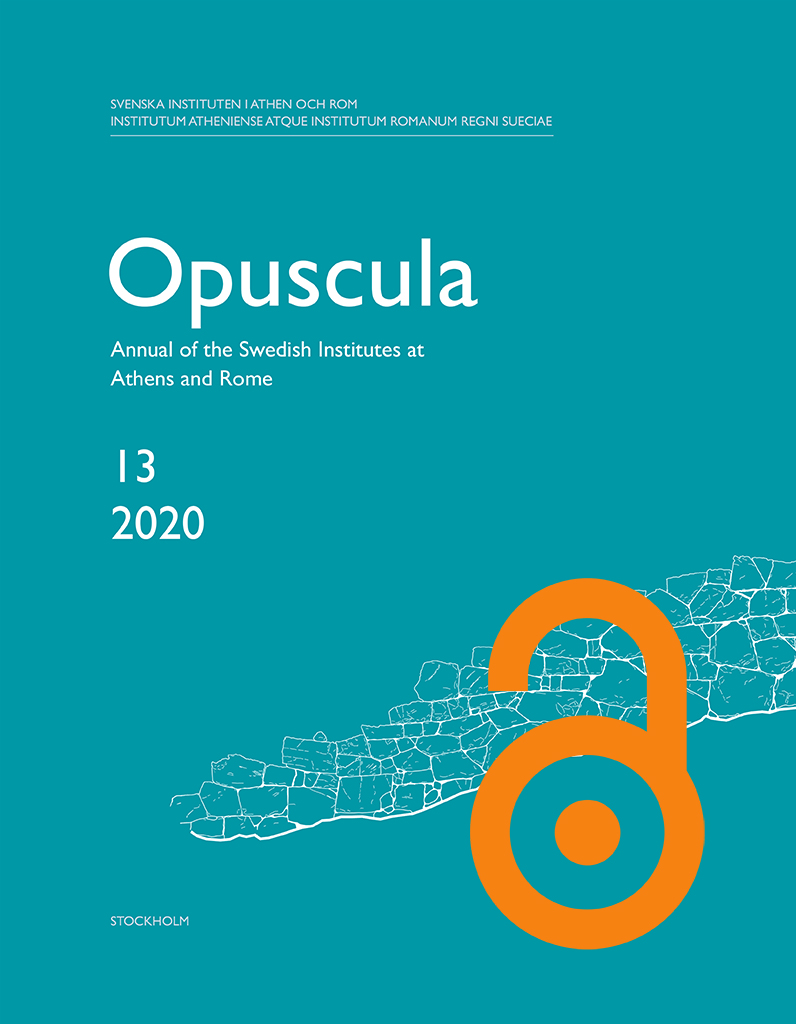Opuscula is published by the Swedish Institutes at Athens and Rome, with the aid of a grant from the Swedish Research Council. Distributed by Eddy.se AB. View journal at ERIH PLUS. All content available with open access. Opuscula. Annual of the Swedish Institutes at Athens and Rome 17, 2024 Contents Articles Pergamos. An unexplored fortified site in north-eastern Greece By Patrik Klingborg, Georgia Galani, Jesper Blid, Stavroula Dadaki & Penelope Malama, pp. 7–24, https://doi.org/10.30549/opathrom-17-02 The Palamas Archaeological Project 2023. A preliminary report of the Greek–Swedish collaboration in the municipality of Palamas, region of Karditsa, Thessaly By Maria Vaïopoulou, Robin Rönnlund, Fotini Tsiouka, Johan Klange, Derek Pitman, Ian Randall, Rich Potter & Harry Manley, pp. 25–45, https://doi.org/10.30549/opathrom-17-03 A bronze deposit excavated at Kalaureia in 2016. A statuette of the Herakles Chiaramonti type, a stand and a thymiaterion By Julia Habetzeder, pp. 47–67, https://doi.org/10.30549/opathrom-17-04 A Roman bath with broken windows in Asine, Argolis. The result of repeated earthquakes? By Dominic Ingemark, pp. 69–93, https://doi.org/10.30549/opathrom-17-05 The Tomba Åström and the 1969 excavations at San Giovenale By Mattia D’Acri & Fredrik Tobin-Dodd, pp. 95–111, https://doi.org/10.30549/opathrom-17-06 Architectural terracottas from San Giovenale. Addenda and conclusions By Örjan Wikander, pp. 113–150, https://doi.org/10.30549/opathrom-17-07 Etruscologia e ideologia nel XX secolo By Marie-Laurence Haack,…
Published by the Swedish Institute at Athens. Distributed by Eddy.se AB. All content available with open access, use links below. “The pen fell from my hand when I was in my eighty-sixth year.” Revisiting the work of Martin P. Nilsson Edited by Jenny Wallensten & Gunnel Ekroth https://doi.org/10.30549/actaath-8-24 2017 marked the 50th anniversary of both the death of Martin P. Nilsson, the eminent Swedish scholar of ancient Greek religion, and the publication of the third edition of his monumental Geschichte der griechischen Religion. Nilsson’s scholarly output was huge, with a production of around 20 items annually, and he touched upon most aspects of the study of ancient Greek religion, be it in a book or an article, in a footnote or an in-depth argument. This volume constitutes a re-reading of Nilsson in the light of new ancient evidence, and modern methods and theoretical approaches. Five leading researchers in this field of religion revisit major works of Nilsson’s oeuvre—Geschichte der griechischen Religion, vols 1 and 2 (Jon Mikalson and Eftychia Stavrianopoulou), Greek folk religion (Vinciane Pirenne-Delforge), Minoan-Mycenaean religion (Matthew Haysom) and Greek piety (Michael D. Konaris)—in order to explore whether his works today are mainly touched upon with just the usual…
Published by the Swedish Institute at Athens. Distributed by Eddy.se AB. All content is available with open access, use links below. From snout to tail. Exploring the Greek sacrificial animal from the literary, epigraphical, iconographical, archaeological, and zooarchaeological evidence Edited by Jan-Mathieu Carbon & Gunnel Ekroth https://doi.org/10.30549/actaath-4-60 Animal sacrifice fundamentally informed how the ancient Greeks defined themselves, their relation to the divine, and the structure of their society. Adopting an explicitly cross-disciplinary perspective, the present volume explores the practical execution and complex meaning of animal sacrifice within ancient Greek religion (c. 1000 BC–AD 200). The objective is twofold. First, to clarify in detail the use and meaning of body parts of the animal within sacrificial ritual. This involves a comprehensive study of ancient Greek terminology in texts and inscriptions, representations on pottery and reliefs, and animal bones found in sanctuaries. Second, to encourage the use and integration of the full spectrum of ancient evidence in the exploration of Greek sacrificial rituals, which is a prerequisite for understanding the complex use and meaning of Greek animal sacrifice. Twelve contributions by experts on the literary, epigraphical, iconographical, archaeological and zooarchaeological evidence for Greek animal sacrifice explore the treatment of legs, including feet and…
Published by the Swedish Institute at Athens. Distributed by Eddy.se AB. All content is available with open access, use links below. The stuff of the gods. The material aspects of religion in ancient Greece Edited by Matthew Haysom, Maria Mili & Jenny Wallensten https://doi.org/10.30549/actaath-4-59 The “material turn” in the humanities and social sciences has brought about an expanded understanding of the material dimension of all cultural and social phenomena. In the Classics it has resulted in the breaking down of boundaries within the discipline and a growing interest in materiality within literature. In the study of religion cross-culturally new perspectives are emphasising religion as a material phenomenon and belief as a practice founded in the material world. This volume brings together experts in all aspects of Greek religion to consider its material dimensions. Chapters cover both themes traditionally approached by archaeologists, such as dedications and sacred space, and themes traditionally approached by philologists, such as the role of objects in divine power. They include a wide variety of themes ranging from the imminent material experience of religion for ancient Greek worshippers to the role of material culture in change and continuity over the long term. Chapter abstracts and author affiliations…
Published by the Swedish Institute of Classical Studies in Rome. Distributed by Eddy.se AB. Open access, use links below. San Giovenale vol. 6, fasc. 2–3. What’s beyond the Etruscan bridge? Analysis and dating of the Vignale plateau By Yvonne Backe Forsberg & Richard Holmgren. Stockholm 2024. ISBN: 978-91-7042-188-4 (hardcover: 345 pp.). https://doi.org/10.30549/actarom-4-26-6-2-3 For more information about the San Giovenale-series, see https://ecsi.se/actarom-4-26/ Abstract The Etruscan site of San Giovenale has been excavated periodically since 1956. From the beginning the main focus has been the question of settlement remains. However, a fundamental area within the site had still not undergone the inquiry necessary for a complete understanding of the site as a whole. The Vignale plateau, connected to the main site by an Etruscan bridge, was surveyed and partly excavated in 1959–1960, but not published. The Vignale Archaeological Project (VAP) began new investigations in 2006 that aimed to answer the question of “What’s beyond the Etruscan bridge?” This publication focuses on the initial investigations of 1959–1960, augmented by new ground- and aerial remote sensing surveys. The current volume is divided in six chapters. Through an introduction, and geological/topographic and historical/archaeological settings (Chapters 1–3), the reader achieves a general understanding of Vignale within…
Opuscula is published by the Swedish Institutes at Athens and Rome, with the aid of a grant from the Swedish Research Council. Distributed by Eddy.se AB. View journal at ERIH PLUS. All content available with open access. Opuscula. Annual of the Swedish Institutes at Athens and Rome 16, 2023 Contents Articles The New Swedish Cyprus Expedition (The Söderberg Expedition): Excavations at Hala Sultan Tekke autumn 2021 and spring 2022. Preliminary results By Peter M. Fischer & Teresa Bürge et al., pp. 7–59, https://doi.org/10.30549/opathrom-16-02 The Palamas Archaeological project. A preliminary report of the 2022 fieldwork conducted by the ongoing Greek–Swedish archaeological field programme in Palamas, region of Karditsa, Thessaly By Maria Vaïopoulou, Robin Rönnlund, Fotini Tsiouka, Johan Klange, Derek Pitman, Rich Potter, Ian Randall, Harry Manley, Elisabet Schager, Sotiria Dandou & Lewis Webb, pp. 61–85, https://doi.org/10.30549/opathrom-16-03 A preliminary report on sculptures and figurative terracottas found at the site of Vlochos, region of Karditsa, Thessaly By Stelios Ieremias & Robin Rönnlund, pp. 87–112, https://doi.org/10.30549/opathrom-16-04 An overlooked 2nd century BC decree by the polis of the Orthieians, Thessaly By Robin Rönnlund, pp. 113–131, https://doi.org/10.30549/opathrom-16-05 The humans of ancient Hermione. The necropolis in the light of bioarchaeology By Anna Tornberg, pp. 133–152, https://doi.org/10.30549/opathrom-16-06 Statuettes of pregnant sows from…
Published by the Swedish Institute at Athens. Distributed by Eddy.se AB. All content available with open access, use links below. Going against the flow. Wells, cisterns and water in ancient Greece Edited by Patrik Klingborg https://doi.org/10.30549/actaath-8-23 Abstract Despite the prevalent picture of the water supply in the ancient world as being dominated by fountains and aqueducts, the large number of excavated wells and cisterns show that these were the primary water sources for most individuals. Yet, little research has been done on their construction, function and use. This prompted the organization of the workshop Going against the flow. Wells, cisterns and water in ancient Greece, held at the Swedish Institute at Athens on 28–29 September 2017, and subsequent publication of the contributions in this volume. The ten papers presented here offer new evidence as well as a wide range of new perspectives on the use and function of wells and cisterns in ancient Greece. Considering the ubiquity of these installations in every type of setting during antiquity, from pan-Hellenic sanctuaries and civic centres to domestic workshops and remote farmhouses, it is hoped that the breadth of interest among the authors will allow other scholars to advance their own work further,…
Opuscula is published by the Swedish Institutes at Athens and Rome, with the aid of a grant from the Swedish Research Council. Distributed by Eddy.se AB. View journal at ERIH PLUS. All content available with open access. Opuscula. Annual of the Swedish Institutes at Athens and Rome 15, 2022 Contents Articles The New Swedish Cyprus Expedition (The Söderberg Expedition): Excavations at Hala Sultan Tekke 2020 and 2021. Preliminary results By Peter M. Fischer & Teresa Bürge et al., pp. 7–76, https://doi.org/10.30549/opathrom-15-02 Roman and Early Byzantine evidence from the area of Palamas. A preliminary report of the ongoing Greek-Swedish archaeological work in the region of Karditsa, Thessaly By Maria Vaïopoulou, Robin Rönnlund, Fotini Tsiouka, Johan Klange, Derek Pitman, Sotiria Dandou, Rich Potter, Lawrence Shaw, Lewis Webb, Stelios Ieremias, Ian Randall & Harry Manley, pp. 77–103, https://doi.org/10.30549/opathrom-15-03 Late Etruscan tripod thymiateria By Örjan Wikander, pp. 105-155, https://doi.org/10.30549/opathrom-15-04 The Basilica Sempronia and the Forum Romanum By Henrik Gerding & Nicolò Dell’Unto, pp. 157–188, https://doi.org/10.30549/opathrom-15-05 Memorial sculpture in the Protestant Cemetery at Rome. New discoveries and an inventory of identified works By Nicholas Stanley-Price, pp. 189–219, https://doi.org/10.30549/opathrom-15-06 Human-environment dynamics in the ancient Mediterranean. Keywords of a research field By Erika Weiberg & Martin Finné,…
Opuscula is published by the Swedish Institutes at Athens and Rome, with the aid of a grant from the Swedish Research Council. Distributed by Eddy.se AB. View journal at ERIH PLUS. All content available with open access. Opuscula. Annual of the Swedish Institutes at Athens and Rome 14, 2021 Contents Articles Gourimadi Archaeological Project. The results from the first excavation season (2018) of a prehistoric site in the Karystia, southern Euboea By Žarko Tankosić, Fanis Mavridis, Paschalis Zafeiriadis & Aikaterini Psoma, pp. 7–26, https://doi.org/10.30549/opathrom-14-02 The Kalaureia Excavation Project. A preliminary report of the work carried out in Area L between 2015 and 2018 By Anton Bonnier, Therese Emanuelsson-Paulson, Dimitra Mylona & Arto Penttinen, pp. 27–54, https://doi.org/10.30549/opathrom-14-03 Some preliminary notes on the limited 2020 campaign of the Palamas Archaeological Project (PAP) By Maria Vaïopoulou, Robin Rönnlund, Fotini Tsiouka, Derek Pitman, Sotiria Dandou, Rich Potter & Johan Klange, pp. 55–63, https://doi.org/10.30549/opathrom-14-04 An ancient cityscape and its people: A study of ancient Hermione. Introductory remarks on historical sources and visible remains, archaeological research and prospects By Alcestis Papadimitriou, pp. 65–76, https://doi.org/10.30549/opathrom-14-05 The topography of Hermione—A preliminary outline By Henrik Gerding, pp. 77–99, https://doi.org/10.30549/opathrom-14-06 The Temple of Demeter Chthonia at Hermione By Jesper Blid, with…
Opuscula is published by the Swedish Institutes at Athens and Rome, with the aid of a grant from the Swedish Research Council. Distributed by Eddy.se AB. View journal at ERIH PLUS. All content available with open access. Opuscula. Annual of the Swedish Institutes at Athens and Rome 13, 2020 Contents Articles The 2016–2018 Greek-Swedish archaeological project at Thessalian Vlochos, Greece By Maria Vaïopoulou, Helene Whittaker, Robin Rönnlund, Fotini Tsiouka, Johan Klange, Derek Pitman, Rich Potter, Lawrence Shaw, Josephine Hagan, Ellen Siljedahl, Matilda Forssén, Sujatha Chandrasekaran, Sotiria Dandou, Veronica Forsblom Ljungdahl, Asta Pavilionytė, Hayden Scott-Pratt, Elisabet Schager & Harry Manley, pp. 7–72, https://doi.org/10.30549/opathrom-13-02 The New Swedish Cyprus Expedition 2019: Excavations at Hala Sultan Tekke (The Söderberg Expedition). Preliminary results, with contributions by L. Recht, B. Placiente Robedizo, C. Eriksson, L. Andersson, M. Svensson, L. Avial Chicharro, S. Hermon, M. Polig & D. Kofel By Peter M. Fischer & Teresa Bürge, pp. 73–111, https://doi.org/10.30549/opathrom-13-03 A Mycenaean pictorial vase from Midea By Katie Demakopoulou, pp. 113–121, https://doi.org/10.30549/opathrom-13-04 A Protocorinthian aryballos with a myth scene from Tegea By Erik Østby, pp. 123–138, https://doi.org/10.30549/opathrom-13-05 Religion and family politics in Hellenistic Kalaureia. Three new inscriptions from the sanctuary of Poseidon By Nikolaos Papazarkadas & Jenny Wallensten,…
